1. When everything goes to hell, humanity reaches for a drink.
“It shouldn’t have been a surprise, but it did surprise us, this drinking to cope.”
—Dr. George Koob, Director of the NIAAA
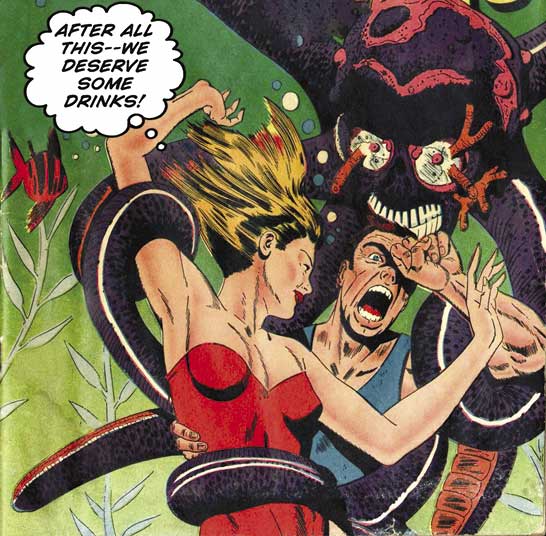 George, George, George, you poor naive idiot. And yes, it’s wrong of me to single out George for abuse. When the lockdowns began reverberating across the nation like a million cell doors being simultaneously slammed shut, all sorts of network medicos and expert analysts reveled in the idea that we were prancing into a golden era of drying out. They giddily insisted that because the bars, clubs, and in some cases, liquor stores, were shut tight, Americans were going to just settle down in front of their TVs and relax with a cup of tea. Which wasn’t an easy thing to do when those same goddamn TVs were spewing out doomsday scenarios around the clock.
George, George, George, you poor naive idiot. And yes, it’s wrong of me to single out George for abuse. When the lockdowns began reverberating across the nation like a million cell doors being simultaneously slammed shut, all sorts of network medicos and expert analysts reveled in the idea that we were prancing into a golden era of drying out. They giddily insisted that because the bars, clubs, and in some cases, liquor stores, were shut tight, Americans were going to just settle down in front of their TVs and relax with a cup of tea. Which wasn’t an easy thing to do when those same goddamn TVs were spewing out doomsday scenarios around the clock.
Those talking heads were engaging in the same brand of magical thinking that followed the passage of the Volstead Act in 1919: The secret of getting someone to stop doing something they really like to do is to partially restrict their access to it.
Of course, then and now, they were wrong.
Drinking not only didn’t go down, it shot up like all those illegal fireworks that brightened our hearts and skies last Independence Day.
A survey published early in the pandemic by a leading health journal found that 60% of respondents were drinking more than before the pandemic. A later Rand poll found that number had leaped to a staggering 75%. In both reports, only 13% claimed they were drinking less. Furthermore, women upped their average intake by 39%, putting them almost on par with men.
This should have surprised no one. Humanity has been using alcohol to deal with plagues, wars, economic chaos, oppression, floods, et cetera for as long as we’ve possessed the ability to ferment or distill it. It’s our go-to stress-killer, always has been, always will be.
And making it harder to get won’t deter us. It didn’t stop us during Prohibition and didn’t stop us ten million years ago when our ancestors first started genetically adapting to alcohol. Back then if they wanted a relaxing buzz, they had to climb down to the jungle floor and scavenge for rotting fruit from amongst an entire menagerie of lurking predators.
All we had to do was pull out our phone and put an order in to Drizly.
2. Drunkards have more grit.
“The hangover is the mean older brother who toughens you up and teaches you how to fight back. —MDM #54
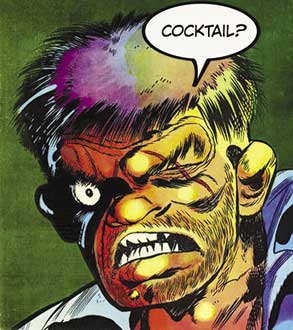 I recently conducted a not-entirely-scientific study on Twitter. I reviewed and compared the lockdown Tweets of admitted enthusiastic drinkers and those who profess abstention or very light drinking. And, generally speaking, I found that the non-drinkers were much more likely to 1.) feel traumatized and afraid, 2.) want and expect the government to fix things, 3.) express anger at others, and 4.) feel depressed.
I recently conducted a not-entirely-scientific study on Twitter. I reviewed and compared the lockdown Tweets of admitted enthusiastic drinkers and those who profess abstention or very light drinking. And, generally speaking, I found that the non-drinkers were much more likely to 1.) feel traumatized and afraid, 2.) want and expect the government to fix things, 3.) express anger at others, and 4.) feel depressed.
The drinkers, on the other hand, came across as much more light-hearted, roll-with-punches types. They joked about COVID. They seemed tougher, harder, possessed of more grit. Which dovetailed perfectly with all my preconceived notions, namely that hard drinkers are a tougher breed of cat. The ritual hangovers we endure have made us veterans of pain, expert endurers. We take the pain and move on, knowing it will eventually fade.
Which is why the drinking population is going to come out of this much more emotionally and mentally intact than the teetotalers. We will move on, they will spend the rest of their miserable lives trying to convince us we should feel scarred, traumatized, terrorized, etc. We don’t have time for that. We have drinks to drink, hangovers to have.
If a real apocalypse goes down, I think we know who’s going to survive in the long term. The boozers will be raiding and/or fortifying the liquor stores while the drys, paralyzed by anxiety, trauma, and drama, are going to be eaten alive by the zombies. Literally.
3. Our drinking habits shifted—and not always for the better.
“Hard times call for hard liquor.” —Prohibition-era slogan.
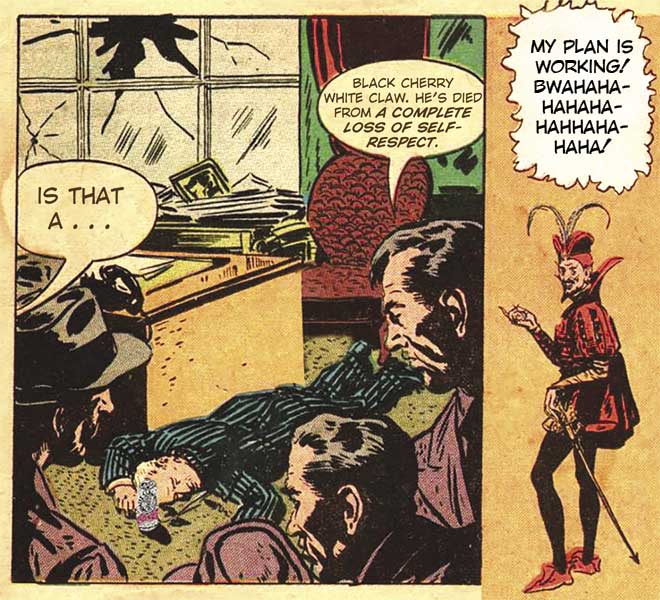 Our collective tastes shifted during the lockdown—not a lot, but just enough to freak out the booze industry.
Our collective tastes shifted during the lockdown—not a lot, but just enough to freak out the booze industry.
For example, have you noticed that all the big brewers (and some soft-drink makers) are suddenly offering up hard seltzer drinks? It’s because hard seltzer sales, already surging before the pandemic, jumped a ridiculous degree during the lockdown.
It’s because of the Millennials and Gen Zs, of course. They didn’t need a pandemic to neutralize the shame of swilling what is essentially a low-carb Zima—they seem to revel in it. They were taking selfies of themselves sucking it down with great gusto long before the Wuhan Clan rolled out its big hit. Then, apparently, a lot of non-Millenials started drinking it because presently White Claw is outselling regular Budweiser. Overall, during the lockdowns, hard seltzer sales shot up an astounding 224%.
Is it because drinking in the privacy of your home removed the inherent shame of being seen in a bar with something called Rasberry Lime Truly in your hand? Did the stress and trauma create a thirst for “comfort booze,” something that harkens back to a more innocent time—high school, say? Has the entertainment industry and/or Satan’s long-term project of infantilizing the populace finally come to fruition? Has our societal DNA forever changed? Time will tell. Thankfully, there are other, less-alarming trends and shifts to ponder upon:
Any port in a storm may apply to sailors, but not so much for forlorn boozers trapped at home. Brand loyalty slipped, but only by a couple of percentage points.
Hard seltzer aside, the biggest—and much more encouraging—surge was for hard liquor, especially whiskey, tequila, and gin.
Boozers missing their bartenders took matters into their own hands: booze-delivery service Drizly reports that sales of cocktail ingredients exploded by 600% in 2020. Furthermore, 54% say they will continue to shake them up at home post-pandemic.
The less mixology-inclined found relief in canned premixed cocktails whose sales leaped 89%.
Drinkers are Super Sizing: boxed wine sales jumped 30% and buyers are now 57% more willing to buy 1.75s than .750s.
Online alcohol sales more than doubled.
Due to boozepiling, overall alcohol sales shot up 54% during the summer of 2020.
Americans are now drinking more than their pre-Prohibition forbears. We’re nowhere near the record, however: In 1830, Americans drank three times our current level.
4. Day drinking is now a thing.
“There’s nothing wrong with drinking before noon. Especially if you’re supposed to be at work.” —Rule 82 of MDM’s 86 Rules of Boozing
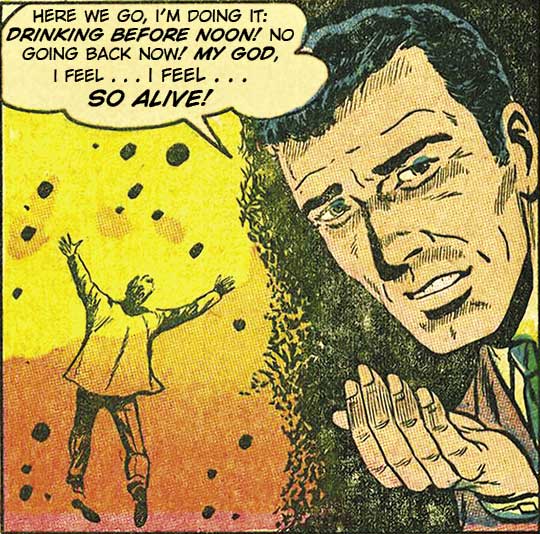 I know what you’re thinking: “When was day drinking not a thing?”
I know what you’re thinking: “When was day drinking not a thing?”
For most of the country, it was never a thing. You and I, of course, cracked that code years ago. Right after high school. And now, at long last, the rest of the gang has caught on and caught up.
It was as if, three weeks into the lockdown, America, perhaps standing in the kitchen and not thinking very hard about finding a new job, collectively murmured, “Fuck it,” and popped open a can of White Claw Mango (Nooooooooo!) at 10am.
All those day-drinking memes flooding the Internet (see below) were a strong indication that we as a nation were undergoing a seismic societal shift. The question flipped from, “Why are you drinking during the day, you freakin’ alcoholic?” to “Why the hell am I not drinking during the day? Is there something better to do?”
 Those who lost their jobs had to do something with all that daylight, stuck at home as they were, and those working from home were suddenly not so supervised. They no longer had to worry about bosses or peers noticing they came back from lunch with the scent of beer, wine, or, for the love of God, Outback’s Huckleberry Hooch Moonshine Cocktail on their breath.
Those who lost their jobs had to do something with all that daylight, stuck at home as they were, and those working from home were suddenly not so supervised. They no longer had to worry about bosses or peers noticing they came back from lunch with the scent of beer, wine, or, for the love of God, Outback’s Huckleberry Hooch Moonshine Cocktail on their breath.
The homebound started having beer, wine, and cocktails with the early meals because—why not? It dramatically improves the experience and taste, which is extra important if you’re a terrible cook.
Of course, the usual scolds are presently crowing, now that the lockdowns are hopefully over, that we will give up day drinking and crawl back under that Puritan yoke we’ve been dragging around for the last century. I think they’re wrong. For once you’ve tasted the sweet, sweet freedom of a daylight buzz, how can you go back? And why should you?
5. Bars are and forever shall be hotbeds of rebellion and dissent.
On this spot stood
The Green Dragon Tavern
The secret meet place of the
Sons of Liberty,
And in the words of Webster, the
Headquarters of the Revolution.
—A commemorative plaque at the former site
 Did you happen to notice that most of the businesses that defied lockdown orders served alcohol? It has always been this way. It was the taverns of Colonial America that served as the tinderboxes of the American Revolution, and it appears little has changed in 250 years. As the great poet Robert Burns was fond of saying, “Freedom and whisky gang together.”
Did you happen to notice that most of the businesses that defied lockdown orders served alcohol? It has always been this way. It was the taverns of Colonial America that served as the tinderboxes of the American Revolution, and it appears little has changed in 250 years. As the great poet Robert Burns was fond of saying, “Freedom and whisky gang together.”
Furthermore, if you thought all those bars were just sitting empty after being shuttered by the government, I have some horrifying news for you. From my own investigations, about 20% were open for, shall we say, select customers. For many, it was purely a matter of survival in the face of existential destruction, and you should not be horrified that they were open, but that you are plainly not considered very “select.” And perhaps even a little uptight and snitchy. Don’t get upset, I’m just trying to help you out, in the event of future lockdowns, which seem very likely. You’re welcome!
6. We can handle more drinking freedom.
“Your government doesn’t give you rights. It prunes those you are born with.” —J. Nix
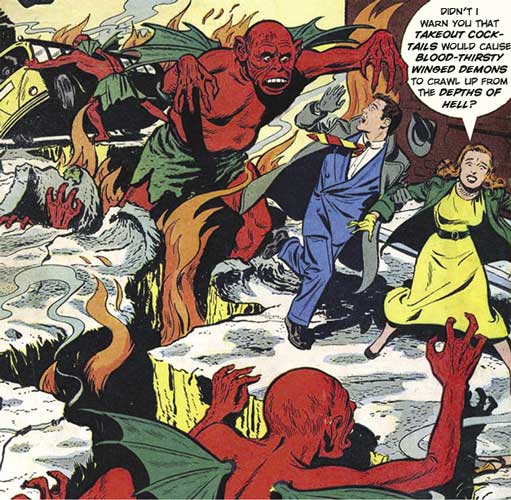 One of the few benefits of the lockdowns was a lot of blue laws left over from National Prohibition were relaxed or discarded entirely. Suddenly you could get booze delivered to your home from sources near and far, bars were allowed to serve to-go drinks, and adults were allowed to legally walk down certain streets with a drink in their hand. If you live in New Orleans, those little liberties may seem small potatoes, but to some parts of the country, they are a huge leap forward.
One of the few benefits of the lockdowns was a lot of blue laws left over from National Prohibition were relaxed or discarded entirely. Suddenly you could get booze delivered to your home from sources near and far, bars were allowed to serve to-go drinks, and adults were allowed to legally walk down certain streets with a drink in their hand. If you live in New Orleans, those little liberties may seem small potatoes, but to some parts of the country, they are a huge leap forward.
And what’s more, at last count 32 states have elected to keep at least some of those liberties in place. Why would they do so? First, they reckon it will help the service industry get back on its feet, and second, all the terrible things that were supposed to happen when we got our hands on a little drinking freedom didn’t happen. Society didn’t devolve into something resembling The Purge because an adult was allowed to walk out of a restaurant with a Margarita in his hand. The lockdown gave us a chance to prove how essentially responsible we boozers are and we came through with flying colors, to the point that bureaucrats are now having a hard time explaining why they want to take those rights back.
Of course, some politicians are moving in the exact opposite direction. Chicago Mayor Lori Lightfoot, for instance, wants to make a 10pm curfew on liquor sales permanent, because it’s a “safety issue.” Billy Sunday couldn’t shut Chicago down, as Frank Sinatra noted, but it looks as if Lightfoot is going to take a crack at it.
7. The government’s first instinct is towards prohibition.
“The urge to save humanity is almost always only a false-face for the urge to rule it.”
—H.L. Mencken
When National Prohibition was repealed in 1933, it became a national pastime to act dumbfounded and stricken that such a ridiculously idiotic and unconstitutional horror ever came to pass and to tell ourselves that something so foolhardy and tyrannical could never happen again.
 Well, the pandemic put the lie to that. Prohibition of alcohol, it turns out, is never far from the hearts and minds of a great many bureaucrats and politicians. Furthermore, when they put various sizes and shapes of prohibition into place, the public response was akin to kids getting their slingshots taken away because some other kid across town got slingshotted in the eye. We put on frowny faces and just knuckled under.
Well, the pandemic put the lie to that. Prohibition of alcohol, it turns out, is never far from the hearts and minds of a great many bureaucrats and politicians. Furthermore, when they put various sizes and shapes of prohibition into place, the public response was akin to kids getting their slingshots taken away because some other kid across town got slingshotted in the eye. We put on frowny faces and just knuckled under.
“Hold on,” you’re saying. “They took away our adult freedoms because there was a public health emergency and they were just trying to save us from ourselves!” Which is funny, because that’s exactly what they were saying back before National Prohibition was enacted. All sorts of “health experts” got in front of congressional committees and swore there was a very real public health emergency happening right now and the only way to solve it once and for all was to get rid of that evil poison alcohol.
Here’s the thing—whenever you give politicians (who tend to be authority freaks to begin with) “emergency powers,” the ability to do whatever they like without any oversight, they tend to go nuts. They tend to err on the side of hysteria.
The worst of the lot was probably Gov. Tom Wolf of Pennsylvania, who wasn’t satisfied with shutting down bars, restaurants, clubs, and every other place you could drink in public, but the liquor stores as well. Which didn’t make a lot of sense to me. Did he think people were drinking the booze in the store and thus getting overly social? Did he have this idea that just the act of purchasing booze made people want to start licking each other?
There were, of course, unintended consequences. Pennsylvania’s drinkers simply drove across state lines, injecting money and possibly COVID into their neighbors.
Even we here in formerly-libertarian Denver had a brush with full prohibition. Our mayor announced at 3pm on a Monday that liquor stores did not fall under the header of “essential business” and would be shut. Within an hour, nearly every liquor store in town had long lines coiling around them like thirsty snakes. A news helicopter captured the dramatic footage live, and it was starting to appear that the mayor’s office had conspired to create a massive, citywide super-spreader event. Less than two hours later, the mayor wisely decided that liquor stores were, in fact, essential.
8. Drinking alone lost a lot of its stigma.
“It’s okay to drink alone.” —Rule 45 of MDM’s 86 Rules of Boozing
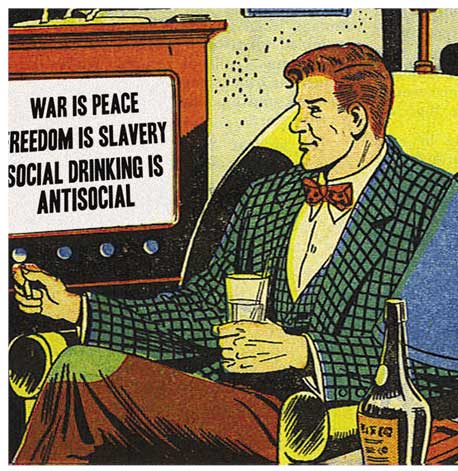 When the bars of the world, those bright shining lights of alcohol-enhanced fellowship and community, were snuffed out by governmental decree, a vast sense of loneliness and dread fell upon we drinkers. Those of us who enjoy getting lit at home as well as abroad undoubtedly took it better than the social butterflies who have a hard time spending a lot of time with, ugh, themselves, but still, it felt entirely strange.
When the bars of the world, those bright shining lights of alcohol-enhanced fellowship and community, were snuffed out by governmental decree, a vast sense of loneliness and dread fell upon we drinkers. Those of us who enjoy getting lit at home as well as abroad undoubtedly took it better than the social butterflies who have a hard time spending a lot of time with, ugh, themselves, but still, it felt entirely strange.
Perhaps stranger still, the Powers That Be were suddenly in the odd position of encouraging people to drink alone. All the conventional wisdom was flipped on its head. Suddenly social drinking was dangerous and irresponsible, the act of selfish sociopaths, while drinking in your home, quite possibly alone, was healthy and heroic. Suddenly The Sure Sign You Are Spiralling Into the Abyss of Alcoholic Doom was just a way to spend your evenings. Or days. Oh, how that must have stuck in the collective do-gooder craw.
This magazine, as you surely know, prepared our readers for this eventuality long ago. We’ve always held fast to the idea that drinking alone is not only a good time, but the best possible way to get closer to the inner you, the real you.
Perhaps this long bout of solitary drinking will bring a healthy dose of self-knowledge to the citizenry.
From funerals come flowers.
—Frank Kelly Rich



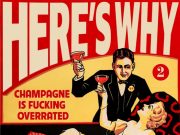

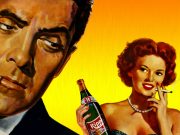



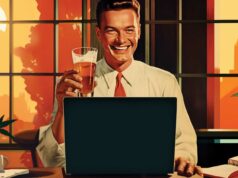

Rabbie Burns: ‘Freedom an’ whisky gang thegither!’ means ‘Freedom and whisky go together.’ Your bastardised spinterpretation changes the fundamental meaning of the phrase, giving it a far more Anglicised/Yankified, misleading slant.
Slainte from Scotland!
The words were Yankified, as it were, but the meaning, as I meant it in the article, has not changed a hair.
I love this essay so much, I read it twice. five minutes apart. but i forgot I’d read it. I love Kentucky. My grandmother was born there. and my great grandma ws born in Ireland and I forget where i was going with this, but I know you understand.
Love each and every word. And replicate it daily.